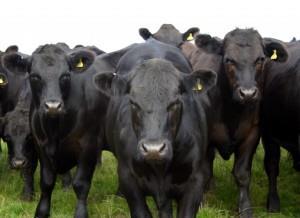AHDB Beef and Lamb has produced two videos highlighting the importance of ensuring livestock are clean when they are presented for slaughter.

The videos, one for cattle and the other for sheep, demonstrate the danger of dirt and faeces being transferred from the hide or wool of an animal onto the meat during processing and how this risk can increase with dirtier stock.
Pathogens such as e-coli and salmonella carried in the guts of infected animals can cause food-borne illnesses in humans if the faeces is transferred onto sterile carcase meat.
Dirty stock can also impact the financial return to the producer, as contaminated meat is trimmed away, reducing the weight of the carcase and therefore the price paid.
Special dispensation was obtained from a vet to allow animals which would be deemed unacceptably dirty to be processed for the purpose of the videos. Usually the animals featured would have undergone some intervention at the abattoir, such as additional cleaning or clipping, which is normally carried out at a cost to the farmer.
Liz Ford, north west regional manager for AHDB Beef and Lamb, said: “Livestock producers are ultimately meat producers and we need to work together as an industry to ensure the food we produce is safe to eat.”
This story was originally published on a previous version of the Meat Management website and so there may be some missing images and formatting issues.















